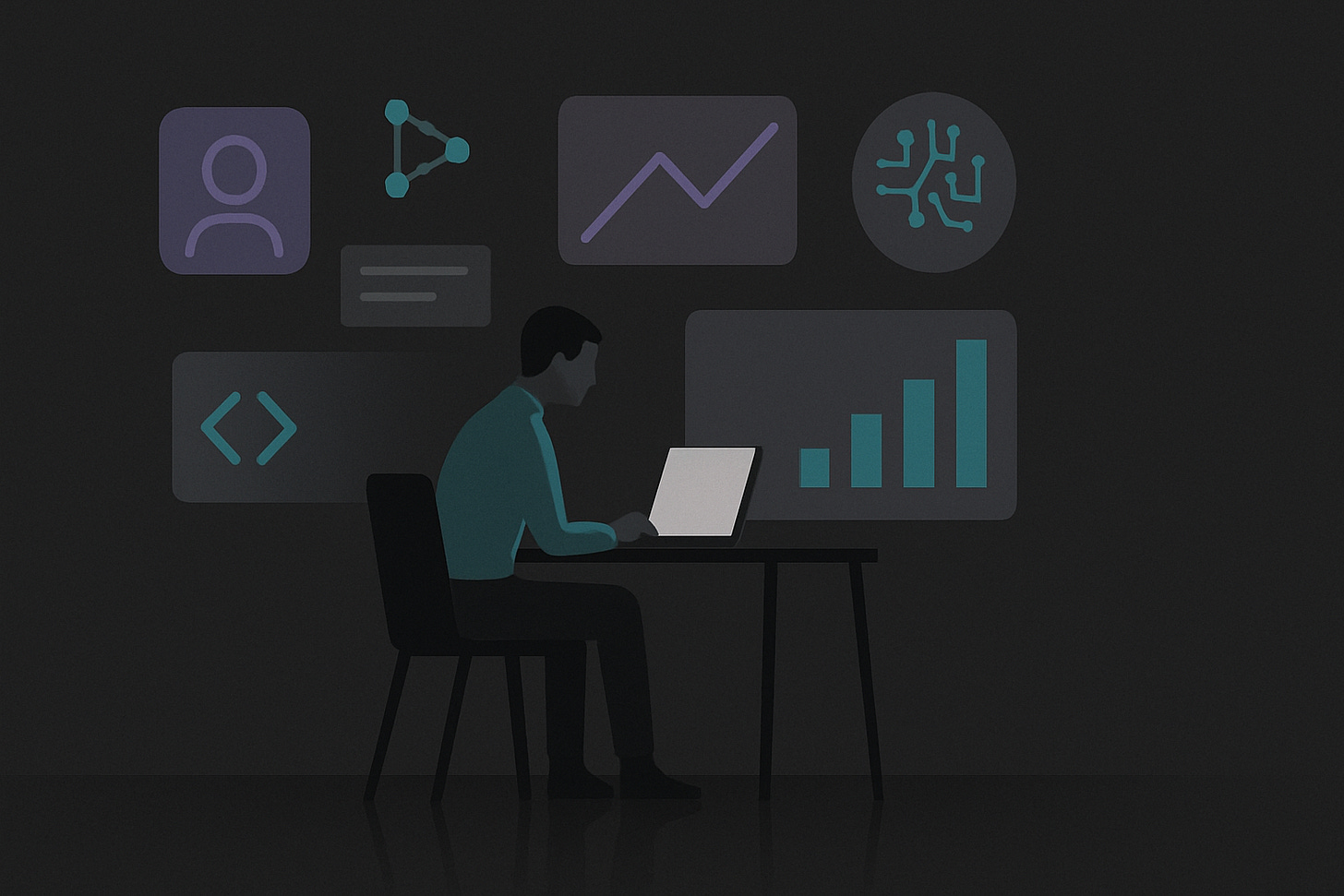The Loneliness Of The Augmented Worker.
Exploring the strange gap between hyper-productivity and meaningful progress in the age of AI.
AI can come for my job. I am not afraid.
If it means taking care of the work done in isolation from colleagues, clients, or partners, I will let AI be my guest.
If it is about making me more human, I will let AI be my guest.
Hyperconnected to data. Underconnected to humans.
Here is a first cliché: our hyperconnected world is not a mirage. Remote and hybrid workers spend 10+ hours in front of screens daily — most of the time with zero human contact. Microsoft’s 2023 Work Trend Index showed that 57% of employee time is spent in meetings or digital communication, with only 43% on actual creation or production.
In fact, the work–worker relationship goes beyond hyperconnection: it is a mix of fusion, addiction, and desperation.
To make matters worse, there is even a double whammy at play:
AI is taking root, amplifying the hyperconnection effect.
Return-to-office (RTO) policies have also made things worse — their goal never was to address this issue, but they have sometimes been felt like yet another disruption. In a 2024 Owl Labs survey, 34% of hybrid employees reported feeling more disconnected from colleagues after partial RTO mandates.
These trends risk hollowing out the very idea of the “augmented worker”. But if we flip the lens, they also hint at where AI could help us reclaim something vital.
Recapturing healthy work habits
Here is another cliché: we hate the overabundance of meetings.
Need to sort out a relationship issue between two teammates? Let’s set up a meeting with the manager in charge. “Tough conversations” make everybody feel important — even if three-person meetings usually result in negative outcomes (and yes, there is data showing triangulation rarely works).
Need to seek alignment on an important client presentation? Let’s set up a meeting with as many colleagues as possible. External validation is always good, even if 80% of the audience is not concerned.
Need to voice concerns over an agenda? Let’s set up a meeting with the client. We’ll stretch the call to prove commitment.
Not all meetings are bad. We’ve all been in productive ones — DM me if you haven’t. Hallway chats can help you close a deal. Brainstorms can unlock that “aha” storyline. Late-night pizza-fueled sessions can be a blast.
These moments build trust, belonging, and identity. They help us become both better individuals and better teams.
And they don’t require AI — even if AI may have helped us get there.
AI-justing to the new norms
Too much human presence is counterproductive; so is too little AI.
Too little human presence is unhealthy; so is too much AI.
Proportions matter. And when AI takes over repetitive, solitary tasks, it can free up cognitive and emotional bandwidth for collaboration — real collaboration — that screens alone can’t offer.
Imagine AI auto-preparing meeting briefs so that when humans gather, they focus on problem-solving instead of updates.
Imagine AI monitoring project dependencies so teams can spot moments to intersect organically, not just in calendar slots. AI’s best role might not be to replace connection, but to engineer the conditions for it.
If AI is coming for my job, I will still let it in.
But I will ask it to leave me my people. Because the augmented worker is still, above all else, a human worker.
In the end, no algorithm can replace the spark in a human handshake.


